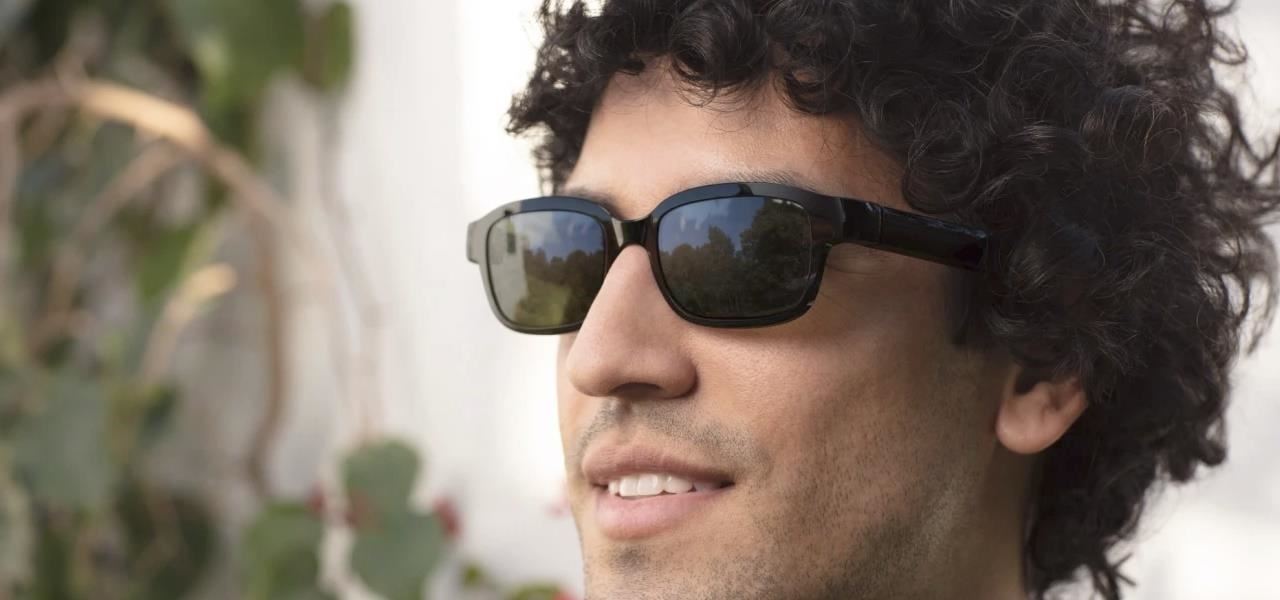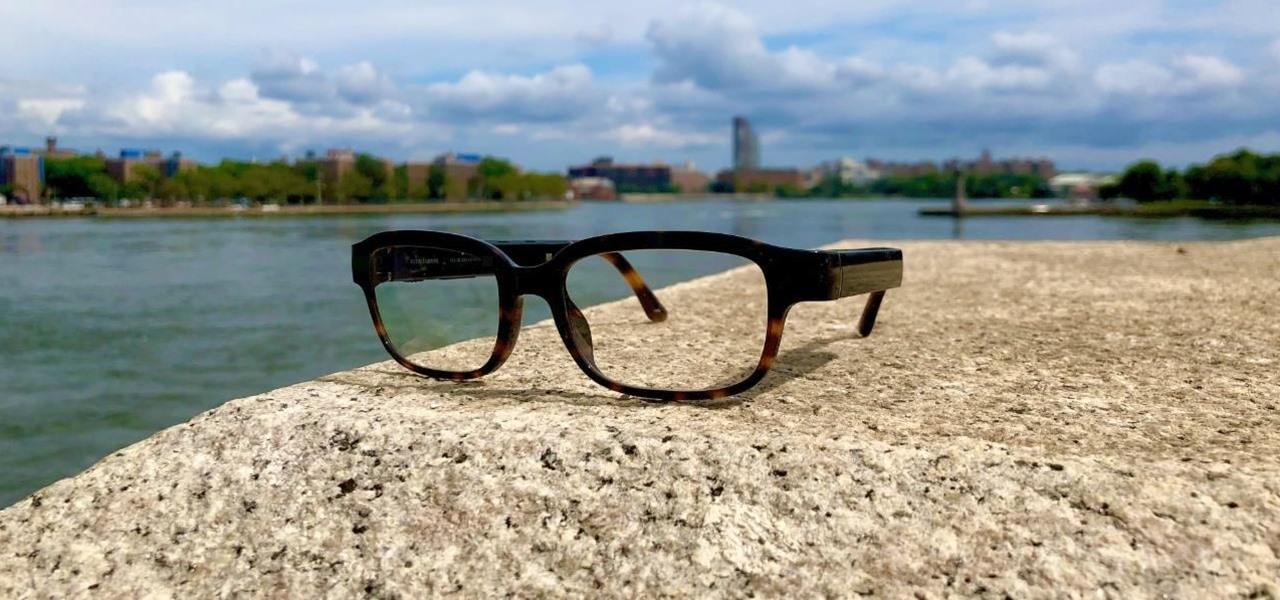Part of the mainstreaming of augmented reality is learning to adopt new habits around the hardware delivering these groundbreaking next-gen interface experiences.
And while the top-tier, truly immersive AR devices like the HoloLens are not yet practical for day-long use, what is obvious to those who have been tracking the space is that AR wearables are pretty much inevitable at this point, despite the technical hurdles involved.
• Don't Miss: Snap Spectacles Finally Evolve into Full AR Smartglasses with Standalone Immersive Superpowers
With that in mind, it's time to begin taking a closer look at devices that are serving as the precursor wearables aiming to prepare us for our fully augmented near future. These are the various face-based wearables that include most of the accoutrements of the ideal AR smartglasses product, except the reality-bending lenses that deliver actual 3D visual constructs.
Among the current options, Amazon's Echo Frames appear to be the leading device providing both the hardware and software options that give us a strong hint at what our smartglasses future will be like. Yes, Snap's Spectacles are here now, but they aren't commercially available (yet).

So that leaves us with the other players such as Bose Frames (who last year wisely stopped trying to call their audio-only products "augmented reality" glasses), and Razer's Anzu audio-only smartglasses. There are others, but in terms of big names, these are the highest profile options (that is, until Facebook debuts its partnership device with Ray-Ban later this year, and Apple unveils its "one more thing").
Looking at this field of players, Amazon's Echo Frames scores an easy win based on one simple factor: the software. When we imagine a world enhanced by Tony Stark/Iron Man-like AR smartglasses, it generally comes with a virtual assistant whispering into our ear and heeding our every spoken command. That's where Amazon's Alexa enters the picture.

Most Amazon Echo device users have already become accustomed to telling their stationary speakers to do things like schedule a meeting, play a song, or buy an item from the e-commerce giant. This learned behavior actually becomes even more powerful when you untether Alexa from the home environment and allow it to travel with you around the city.
I picked up my own pair of Echo Frames (2nd gen) toward the end of 2020 and put the device through its paces. But not long after I started using it, for some reason, the device simply conked out. Disappointed, I quickly returned the $250 device. Then, in May, Amazon updated the 2nd gen version with a blue light blocker model, and (finally!) two sunglasses versions. The sunglasses update was important.

After years of analyzing Snap's wearables, I believe that, in addition to Snap's sheer dedication to AR, the primary reason Spectacles are still alive is because all of the previous versions also did double duty as cool shades. Now Amazon's Echo Frames offer a "polarized sun lenses" model and a "polarized blue mirror" version (for all you cyberpunk mirror shades geeks hiding out there).
As fate would have it, I decided to give the device another shot, and I'm glad I did. Some have dinged Echo Frames for its reliance on the Alexa App if you're using an iPhone, but I found the interactions fairly seamless and easy to use. Using Echo Frames paired via Bluetooth to my iPhone I was able to do things most Alexa users are familiar with, such as scheduling alarms, making lists, and listening to news, music, and podcasts, all via voice commands.

Launching the Alexa-powered device in the field really begins to make the landscape clearer when considering the other smartglasses players. Apple's Siri has never worked well for me, so even if Apple Glasses are beautifully designed, I'm not optimistic with regard to the virtual assistant linchpin features. Google's nameless assistant (aka Google Assistant) will likely power its next wearable, but there's no indication of when the company's acquisition of North will yield an actual product.
And Microsoft's Cortana? Well, its future as a third-party device-supporting virtual assistant competing with the likes of Alexa, Siri, and Google is now uncertain. But remember, HoloLens inventor Alex Kipman has confirmed that the company is working on smartglasses, so it's worth keeping an eye on Microsoft as the smartglasses race heats up.



The bottom line here is that, like the war for the AR cloud (aka the metaverse), in the realm of audio-based smartglasses, he who controls the virtual assistant is king. And since both the Razer Anzu and Bose Frames rely on virtual assistants controlled by other companies, Amazon's all-in-one Echo Frames and Alexa package is the default winner, for now.
There's also the matter of design. Razer's Anzu smartglasses operate via a completely touch-based interface, which can be unreliable unless you're very far down the product development roadmap, like Apple's AirPods Pro touch interactions. On the other hand, Bose Frames, which also has touch/swipe-based controls, at least includes a button for some simple functions.
So far, I've found using the touch controls on Echo Frames reliable, but less useful compared to using my voice, or the array of buttons on the device. Strongly tapping the touch controls on the AirPods in your ear works fine, but doing the same thing on a pair of glasses frames seems to move the entire frame (even if just slightly) and makes the action mildly jarring, so I avoid those interactions on Echo Frames.

All in all, the combination of the physical buttons, the variety of frame colors and lens options (even though experts don't think blue light blocking is a thing), and the native virtual assistant puts Amazon's Echo Frames at the top of the list of audio-based smartglasses (for now). Oh, and the base models just got a price cut, so while the price point for most of these smartglasses is hovering around the $200 mark, the base model of Echo Frames is now just $179.99.
But stay tuned, this space is changing nearly every week, so the top contenders now could be playing catchup with just a few surprise announcements in the coming months. Nevertheless, especially if you're a frequent Amazon shopper, Echo Frames are a great gateway experience into the world of smart devices for your face while we ramp up to fully AR-enabled mainstream smartglasses.
Just updated your iPhone? You'll find new features for Podcasts, News, Books, and TV, as well as important security improvements and fresh wallpapers. Find out what's new and changed on your iPhone with the iOS 17.5 update.























1 Comment
Thanx for the info
Share Your Thoughts